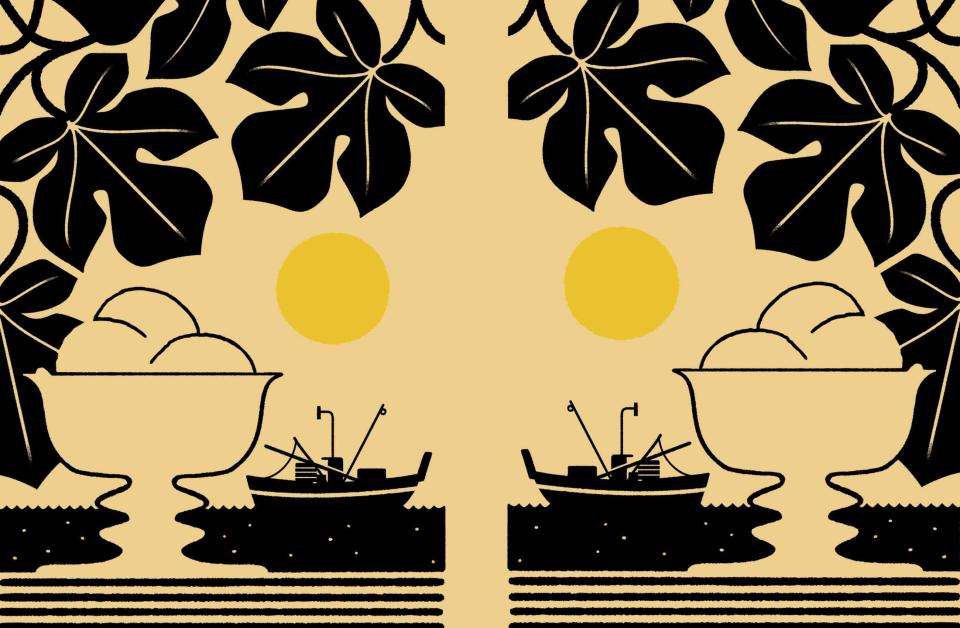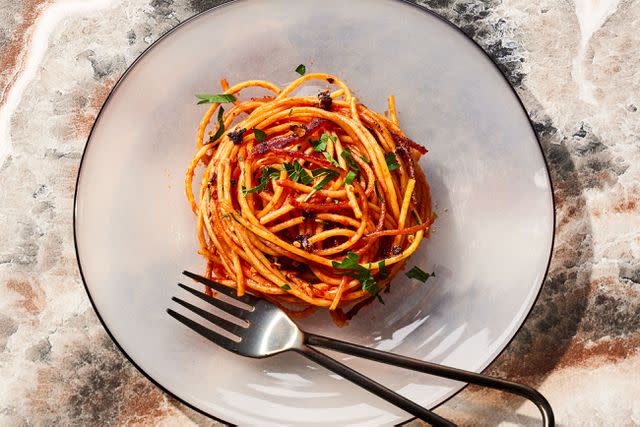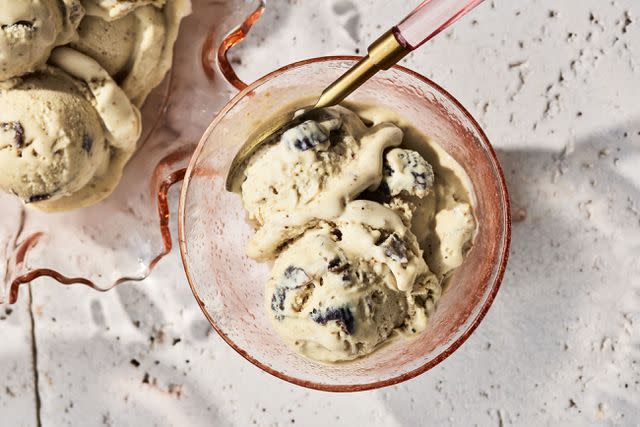What I Learned From My Bitter and Sweet Year in Southern Italy
Katie Quinn's time in Italy left her with difficult memories tempered with anticipation and gratitude.

Simone Massoni
Is there such thing as a miscarriage mistake? Not the losing of the embryo itself, but in how the miscarriage is handled after the fact? I’ve asked myself that question countless times, wondering how the best year of my life also included the sloppy emotional management of the most painful experience my partner and I had ever faced.
We lived on the shore of the Adriatic Sea, a five-minute walk from the port. It was the end of the first wave of COVID-19, and my partner and I had decided to make limonata out of lemons; we pursued a long-held desire of living in Italy and seeking out my ancestral heritage.
The day we arrived, we walked to the port and scanned the many small fishing boats, painted royal blue and white, that dotted the mouth of the water. I bought two dozen sardines from a fisherman’s stall, took them home, gutted them, and roasted them with an ample dosing of gorgeous green olive oil and sour lemons. Once they were out of the oven and tossed with al dente spaghetti, I realized my vegetarianism of two years had just been replaced with the need to belong and the desire to live the life offered to us here.
Dinner was followed by a stroll to the nearest gelateria for a cone of fresh fruit gelato made with the large, sweet figs — called fiorone — that grow abundantly in early summer. Without a map, I might have guessed I’d just stumbled into paradise.
Of course, there’s no such place. Fast-forward a handful of months, after the nightmare of the hospital procedures to remove the lifeless embryo, and after we had two cars stolen just to nail home the point that plans had gone sideways.
The good comes with the bad, and nothing is perfect (everyone knows that), but while I was living that year, I wished I could cash in a do-over token. When a friend from nearby Bari introduced us to a local pasta dish, Spaghetti all’Assassina, made with a spicy red sauce, it felt oddly fitting. The poignancy of the dish’s name, “assassin’s spaghetti,” along with the slightly bitter bits of crispy, burnt noodles, reminded me of the well of sadness I held in my gut.
What I couldn’t have seen at the time was that those struggles intensified my gratitude for what happened the next year, when I did get a do-over, of sorts, and gave birth to a most beautiful girl, Serafina. Even though the difficulties of that time in Southern Italy will always be present in my memories, that experience — and region — has indelibly shaped my identity and the way I see the world, and I still keenly yearn for both the burnt spaghetti and the luscious, fruity Fig Gelato.
Spaghetti all’Assassina

Victor Protasio / Food Styling by Margaret Monroe Dickey / Prop Styling by Jillian Knox
This quick and spicy tomato and peperoncini pasta dish with bits of caramelized spaghetti is finished with rich, buttery olive oil.
Fig Gelato

Victor Protasio / Food Styling by Margaret Monroe Dickey / Prop Styling by Jillian Knox
Dried Black Mission figs and light brown sugar provide caramelized sweetness and depth in this rich and creamy dessert.
ABOUT THE AUTHOR: Katie Quinn is the author of Cheese, Wine, and Bread: Discovering the Magic of Fermentation in England, Italy, and France (Harper Collins) and the Avocados cookbook (Short Stack Editions). She’s also a food and travel video journalist and podcast host. She has a popular YouTube channel, QKatie, and she attended Le Cordon Bleu culinary school in Paris. Katie believes there is a story to be told everywhere and that food connects people. She lives in Toronto with her daughter, husband, and dog.

